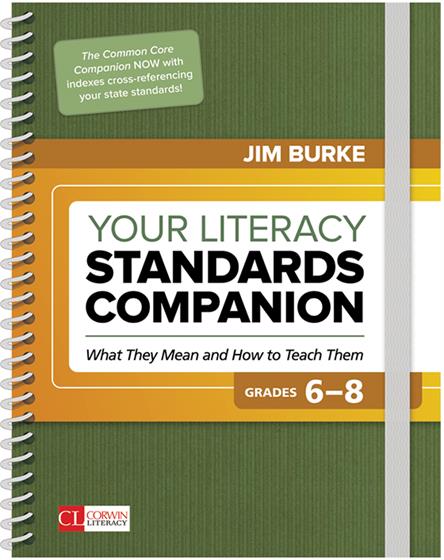Introduction: Turning Standards Into Daily Teaching
Quick Reference: Common Core State Standards, 6–12 English Language Arts
Quick Reference: Common Core State Standards, 6–12 English Language Arts in History/Social Studies, Science, and Technical Subjects
Indexes Cross-Referencing Your State Standards
The Complete Common Core State Standards: Decoded
Part 1. Reading
Key Ideas and Details
1. Read closely for explicit meaning . . . make logical inferences . . . cite textual evidence
2. Determine central ideas . . . analyze their development . . . summarize key details
3. Analyze how and why individuals, events, and ideas develop and interact
Craft and Structure
4. Interpret words and phrases as they are used . . . and shape meaning or tone
5. Analyze the structure of texts, including specific elements and sections
6. Assess how point of view or purpose shapes the content and style of a text
Integration of Knowledge and Ideas
7. Integrate and evaluate content presented in diverse formats and media
8. Delineate and evaluate the argument and specific claims, including the validity
9. Analyze how two or more texts address similar themes or topics
Range of Reading and Level of Text Complexity
10. Read and comprehend complex literary and informational texts
Part 2. Writing
Text Types and Purposes
1. Write arguments to support claims . . . using valid reasoning and . . . evidence
2. Write informative/explanatory texts to examine and convey complex ideas
3. Write narratives to develop real or imagined experiences or events
Production and Distribution of Writing
4. Produce clear and coherent writing
5. Develop and strengthen writing . . . by planning, revising, editing, rewriting
6. Use technology . . . to produce and publish writing and to interact and collaborate . . .
Research to Build and Present Knowledge
7. Conduct short as well as more sustained research projects
8. Gather relevant information from multiple . . . sources . . . avoiding plagiarism
9. Draw evidence from . . . texts to support analysis, reflection, and research
Range of Writing
10. Write routinely . . . for a range of tasks, purposes, and audiences
Part 3. Speaking and Listening
Comprehension and Collaboration
1. Prepare for and participate in . . . conversations and collaborations
2. Integrate and evaluate information presented in diverse media and formats
3. Evaluate a speaker’s point of view, reasoning, and use of evidence and rhetoric
Presentation of Knowledge and Ideas
4. Present information, findings, and supporting evidence
5. Make strategic use of digital media and visual displays of data
6. Adapt speech to a variety of contexts . . . demonstrating command of formal English
Part 4. Language
Conventions of Standard English
1. Demonstrate command of the conventions of standard English grammar and usage
2. Demonstrate command of the conventions of standard English capitalization, punctuation, and spelling
Knowledge of Language
3. Apply knowledge of language to understand how language functions
Vocabulary Acquisition and Use
4. Determine or clarify the meaning of unknown . . . words and phrases
5. Demonstrate understanding of figurative language, word relationships . . . nuances
6. Acquire and use . . . general academic and domain-specific words and phrases
Resources
Resource A. Common Core Recommended Reading Lists
Resource B. Text Complexity Tool
Resource C. Planning Calendar Templates
About the Author



